This article, the second part of the Sopwith Camel preview (click here to see the Part 1), presents the three versions of this fighter coming soon in the WW1 Wings of Glory Airplane Packs, piloted by the aces William Barker, Aubrey Ellwood and Harold Stackard.
William Barker
One of the three Sopwith Camel to be featured in the Airplane Packs is the B6313, piloted by Major William George Barker, the most decorated serviceman in the history of Canada, and indeed in the history of the British Empire and Commonwealth of Nations. Barker was a legendary pilot for his superb accuracy with a gun, incredible bravery, disregard for danger, and his reluctance to follow orders from his commanding officers. He is credited with 50 victories, and 46 of these were collected flying the Sopwith Camel B6313, which became famous as the most successful fighter of the WW1.
Born in November 1894, “Billy” Barker enlisted as a trooper in the 1st Canadian Mounted Rifles in December 1914, soon after the outbreak of the First World War, and went to England in June 1915, and then to France in September. After some time as a Colt machine gunner, in March 1916 he was transferred to the 9th Squadron of the Royal Flying Corps, starting out as a mechanic. In August 1916 he was officially qualified as an observer, in the 15th Squadron – by this time he shot down his first enemy aircraft from the rear seat of a B.E.2d.
In January 1917 he received a pilot’s certificate, and then started to fly the aircrafts BE-2s and RE-8s with No.15 Squadron. In August he was wounded in the head by anti-aircraft fire, and then was sent to England as an instructor. Following his continuous requests for front line service, in the autumn 1917 Barker went to the newly formed 28th Squadron, flying the Sopwith Camel.
He downed an Albatros DV on his first patrol, but the victory was not claimed because the patrol was unofficial. His first credited victory was on October 20th, when he shot down an Albatros DIII of Jasta 2. Six days after, he downed two more DVs of Jasta 18. In early November 1917, the 28th Squadron was transferred to Italy. At the end of that month he downed an Austrian Albatros D.III near Pieve di Soligo, and on December 3rd he shot down another Jasta 39 Albatros D.III, killing its pilot, and also destroyed a balloon.
One of his most successful and also most controversial raids, fictionalized by Ernest Hemingway in the short story “The Snows of Kilimanjaro”, took place on December 25th 1917, when he and his wingman, Lieutenant Harold Hudson, conducted an unauthorized mission attacking the Motta Aerodrome. Strafing the field with tracers, they set the hangars on fire and destroyed several aircrafts on the ground. Before departing, they dropped a placard which read, "To the Austrian Flying Corps from the English RFC, wishing you a Merry X-Mas." Returning home, he scored another kill the next day, when the Austrians launched a reprisal attack.
Despite his long list of victories, Barker’s tendency to ignore orders by flying many unofficial patrols made him to be passed over when the post of Commanding Officer of No. 28 Squadron became vacant. Disappointed, he applied for a posting and joined No. 66 Squadron in April 1918, together with his Camel B6313, where he claimed a further 16 kills by mid-July.
Barker was given command of his own squadron on July, 14th, the 139th. The squadron flew the Bristol F2b Fighter, but Barker took his Camel with him and continued to fly fighter operations, and brought his total victories in Italy to 46 before being recalled to England in early October. The B6313 was dismantled in October 1918, and Barker kept its clock as a memento - although he was asked to return it the following day.
Barker’s next assignment was to fly the new Sopwith Snipe fighter plane to the Aircraft Supply Depot, and then return to London, on October 27th, 1918. But rather than returning the Snipe as he was instructed to do, he opted to take the plane on one final combat patrol, before taking command of the Fighter school. He engaged that day his most famous battle, in which he destroyed four enemies’ aircrafts, despite appalling wounds to both legs and his elbow, in an epic combat for which he received the Victoria Cross. He had already being awarded several times because of his exploits with the Camel.
When he was flying over the Mormal Woods, in Northern France, he attacked an enemy Rumpler two-seater which broke up, its crew escaping by parachute. Then he met a formation of Fokker D.VIIs, and in a battle against 15 or more enemy machines, Barker was wounded three times in the legs, then his left elbow was blown away. Even seriously wounded and bleeding profusely, he managed to control his Snipe and shot down three more enemy aircraft, before force-landing behind Allied lines. After more than two months in a hospital in Rouen, France, Barker was transported back to England, and was not fit enough to walk the necessary few paces for the VC investiture at Buckingham Palace until March, 1st 1919.
After the war, Barker formed a business partnership with the Canadian ace Billy Bishop, the Bishop-Barker Aeroplanes Limited, which lasted for about three years. In 1922 he rejoined the fledgling Canadian Air Force with the rank of Wing Commander. In 1930, he was the President and General Manager of Fairchild Aircraft, in Montreal, when he died in the crash of his Fairchild KR-21 biplane trainer during a demonstration flight for the RCAF, at Air Station Rockcliffe, near Ottawa, Ontario.
Aubrey Beauclerk Ellwood
Born in July 1897, Sir Aubrey Beauclerk Ellwood joined the Royal Naval Air Service in 1916, serving initially in the 3rd Squadron, where he rose to the rank of Flight Lieutenant and became a double ace - he acquired a score of ten confirmed victories, all flying the Sopwith Camel.
The first of the Ellwood’s victories, in July 1917, was achieved when flying the Sopwith Camel B3781, the model depicted in the Wings of Glory Airplane Pack, recognizable by the hearts depicted on the side of the fuselage and on the upper wings. Ellwood shot down a seaplane three miles far from shore of Ostend, Belgium. On August 27th 1917, he crashed near St. Po., and after the repair, the fighter B3781 went on to fly with the 9th Squadron and later with the 10th Squadron, where it was shot down on March, 18th 1918.
Ellwood was awarded with the Distinguished Service Cross (DSC) for his determination and skill as a pilot in an action on March, 10th 1918. According to the supplement to the London Gazette published on April 26th, Elwood "attacked three Albatross scouts and drove two of the enemy aircrafts down, and then dived on the third and fired a long burst. The enemy machine pulled up, fell over on its side, and fell straight down out of control until lost to sight. He has also destroyed or brought down out of control many other enemy machines."
Aubrey Ellwood was amongst the pilots awarded the first permanent commissions in the RAF in 1919. In that year, he was transferred to the 28th Squadron, serving in India. In 1932 he was appointed Officer Commanding No. 5 Squadron, before returning to the UK in 1937, to join the Directing Staff at the RAF Staff College.
In World War II, Ellwood served as Deputy Director of Bomber Operations before becoming Air Officer Commanding No. 18 Group in January 1943, and then Senior Air Staff Officer at the Headquarters Coastal Command in March 1944. He completed his war service as Director-General of Personnel. After the war, Ellwood was appointed Air Officer Commanding in Chief Bomber Command, and later, he was assigned to Transport Command, which was his last role before retiring in January 1952.
Two years after retiring, he became Governor and Commandant of the Church Lads Brigade and in 1960 was appointed Deputy Lt of Somerset. He died in December 1992.
Harold Francis Stackard
The ace Harold Francis Stackard, credited with 15 victories during WW1, was born in March 1895, in Norwich. He started his military career serving on HMS Orotava, of the 10th Cruiser Squadron, in France and Gallipoli. In October 1916 he was transferred to the Royal Naval Air Service, and two months later he was promoted to Flight Sub-Lieutenant.
Stackard scored his first victory on May, 2nd 1917, flying the single-seat Sopwith Pup. He destroyed a two-seat aircraft over Middelkerke, West Flanders, Belgium. By the end of that month he achieved his second victory, again with a Sopwith Pup, and in June he scored his third victory, with a Sopwith Triplane. Stackard's remaining twelve victories were all with a Sopwith Camel, in September and October 1917, several of them shared with other pilots.
Stackard scored a double kill on the afternoon of September, 11th 1917, when he destroyed two Albatros D.Vs over Leke, West Flanders, one in flames. He shared both kills with Joseph Fall and Arthur Wood. Another double victory was scored on September, 24th 1917, when he first sent an Albatros D.III out of control over Leke, and then he drove an Albatros D.V out of control over Middelkerke.
By 1918, Stackard was an instructor at RAF Cranwell in Lincolnshire. In January that year he was promoted to Lieutenant. In July he was transferred to the new No. 157 Squadron of the Royal Air Force, and there he had the opportunity to fly the Sopwith Salamander fighter before he left the service. Stackard died at age 54 in November 1949 at Fittleworth, West Sussex, England.
Information sources: The Aerodrome, Wikipedia, Military Factory, WW1 Aviation, Virtual Museum Canada, Air of Authority - A History of RAF Organisation, History in Illustration.

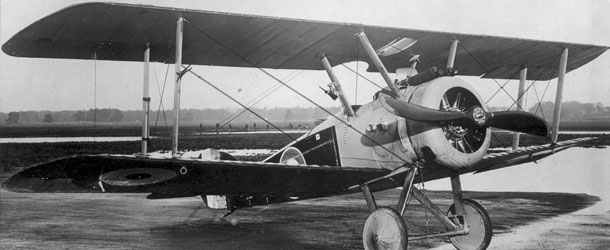
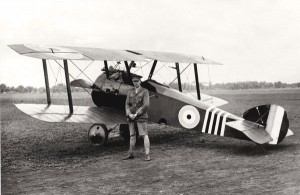
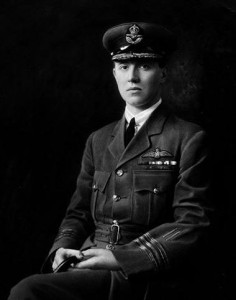
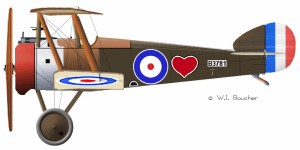
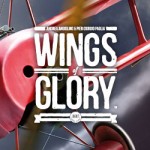






Follow Us on